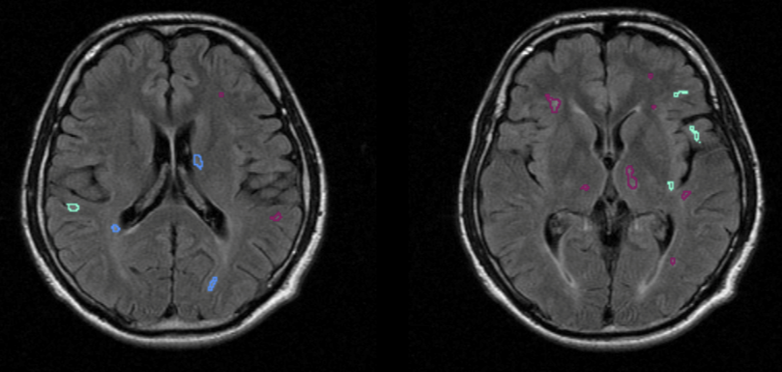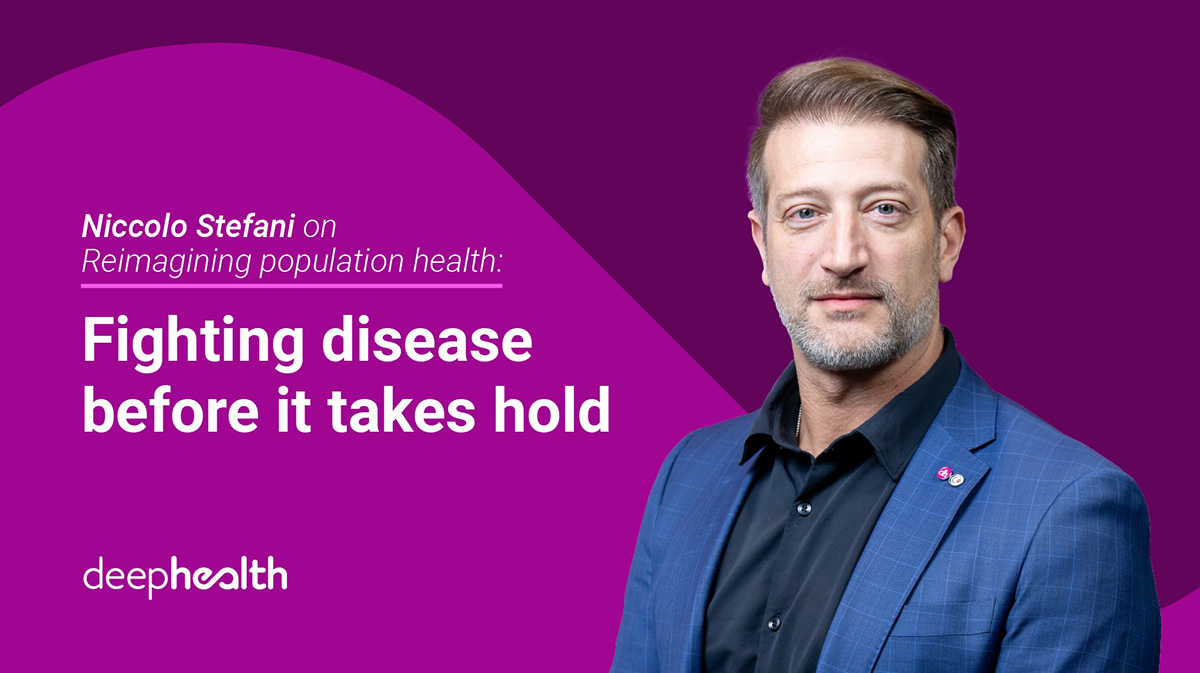Advances in AI open new possibilities
Cancer screening services save lives through earlier detection of disease but are currently limited to a few tumor types. Advances in artificial intelligence (AI) are opening new possibilities to change the odds in our favor.
As a radiologist working in clinic, I was struck by how often patients told me how grateful they were to receive screening when they did. Even when cancer is found, it is surprising how many people say they feel lucky to have been diagnosed early enough when effective treatment is possible. The benefits of screening are well established, it can make the difference between catching cancers at stage 1 and stage 4 which is frankly the difference between life and death in most cases.
Why don’t we screen for more cancer types? This is a common question people ask when they understand how important an early cancer diagnosis is in giving people the best chance of survival.
The answer is surprisingly complicated and includes issues such as funding, availability of suitably trained radiologists, capacity to manage follow-up appointments, and the logistics of patient communications and management. At the heart of it, however, is whether we can have confidence in the results of screening a large number of people, the vast majority of whom will be free of disease. Even a small difference in accuracy can have a large impact when you are scanning a lot of people.
For large-scale screening programs to work, you need diagnostic technologies that are simple to implement, efficient to manage and that can correctly identify the small fraction of people who show signs of disease at an early enough stage to make a positive difference to their lives. It is important to remember that in a screening program, we are typically looking for the earliest, most ambiguous signs of disease in mostly healthy people, and therefore some variation in accuracy across patients is inevitable in any large program reliant on human interpretation. Machine learning with AI has allowed us to find patterns in images that can give the radiologist greater confidence and accuracy in image interpretation. This, in turn, can help avoid unnecessary anxiety and recalls for healthy people, and inefficiencies for already stretched healthcare systems.
Contextual challenges also prevent the screening process from being fully effective. First, there’s the matter of patient proactivity: 10% of patients cancel late or do not arrive at appointments, and less than 15% of patients are self-scheduled. High treatment costs are also a factor: scheduling and engagement via contact centers can cost as much as $12 per exam, and the revenue cycle is back loaded with over 50% of collection upfront. All this adds up to more than 40% of radiologists and technologists reporting burnout.
Therefore, implementing AI across the radiology workflow to support with everything from operational tasks like patient follow-ups to reading screening images can be hugely effective in easing radiologists’ workloads and enhancing the benefit screening has for patients.
Breast cancer – A screening success story
This combination came together for breast cancer in the 1980s with the introduction of public screening programs in Europe. Breast cancer screening has since been adopted around the globe, saving countless lives along the way, and allowing doctors to intervene when they have the best chance of beating the disease. Nowadays, screening success has been elevated using AI; for instance, RadNet’s Enhanced Breast Cancer Detection (EBCD) program uses DeepHealth’s AI-powered breast solution. This enhances a radiologist’s interpretation capabilities by quickly highlighting suspicious lesions and has been shown to increase detection rates by an impressive 21%.1 And this saves lives; when breast cancer is detected and treated at stage 1, the five- year relative survival rate is 99%. 2
Replicating this success has since been a goal for researchers in both technology and healthcare, with lung cancer broadly identified as a suitable contender given its association with known risk factors. According to the World Health Organization, lung cancer is the leading cause of cancer- related deaths worldwide. It is responsible for the highest mortality rates among both men and women and places a significant burden on healthcare systems. It is notoriously difficult to treat if caught at an advanced stage, although can be successfully treated if caught early enough. 3 It is therefore a hugely attractive target for screening programs, but to date, public screening programs for lung cancer have struggled to establish themselves. The reason? Uncertainty regarding the practicalities of delivering a major screening program giving reliable results with the technology currently available.
We now have the chance to make lung cancer screening possible
This is starting to change, however. The development of AI tools that can analyze a lung computerized tomography (CT) scan and identify early signs of cancer lesions has changed the facts of lung cancer screening, making it possible to find the rare case among thousands of healthy scans. This has turned the balance in favor of screening, making many people believe that the time for large-scale lung cancer screening programs has come.
To demonstrate this potential, lung cancer screening programs have sprung up in various locations including the UK, which was a pioneer in breast cancer screening and has demonstrated an ability to lead the way in public health initiatives. Targeted Lung Health Checks (TLHC) is an independent, multicenter, four-year targeted screening program for high-risk individuals across England. We at DeepHealth have been proud to support the program with our technology and AI tool, which has been used in over 91% of screening sites.
As Dr Graham Robinson, Consultant Radiologist, NHSE Clinical Lead for Digital & Imaging Transformation and President of the British Society of Thoracic Imaging, recognizes, AI has made THLC possible: “I can’t see a way that you should or could do lung cancer screening without AI.”
Earlier detection saves lives
The UK initial program has seen more people diagnosed with cancer at stage 1, the earliest stage, and less at the most advanced stage when many treatment options are no longer possible. 4 It demonstrates that an effective lung cancer screening program can be employed at scale, in a way that is cost-effective for a state-funded health service and that saves both lives and money in care costs. The success of the program is expected to lead to the establishment of a national lung cancer screening program.
Beyond the UK, our AI and informatics solutions are being used in the HUNCHEST program in Hungary, primarily aimed to investigate the feasibility of a population-based lung cancer screening in the country, with positive results so far; 5 and in the CASCADE study in France, emphasizing the essential role of AI in improving lung cancer screening for a specific group of female smokers. 6
We believe we are only seeing the beginning of what AI can make possible. In over 260 screening sites worldwide to date, DeepHealth is tirelessly innovating to empower radiologists in the detection and diagnosis of diseases, pushing the boundaries on what we can do with imaging technology in healthcare. For example, we are now working to introduce AI tools for prostate cancer screening, notoriously associated with a high risk of false positives.
Another key differentiator is that we are imagining how AI can support screening beyond image interpretation. We are creating a world where AI can help drive even greater efficiencies through supporting patient communications and scheduling, workflow management and reporting. Greater efficiencies make new screening programs more reliable and mean that radiologists can focus on highly complex cases where their expertise has the most value, with less time spent on routine tasks. What’s more, managing the patient efficiently through the screening workflow can liberate overworked primary health providers.
Our knowledge of radiology and experience of deploying the latest technologies at country-level scale makes us ideally placed to support the screening programs of the future. As the focus of healthcare systems shifts towards prevention rather than cure, the place of screening programs will grow in importance in keeping our ageing populations and systems healthier. We’re already on the verge of massive evolution and expansion in lung cancer screening, which brings us huge hope for the future of diagnostics – we can’t wait to see what comes next!
References
1) SmartMammo Dx + Assure used in a safeguard review process improved cancer detection rate by 21% in a study of over 575,000 patients, showing the same benefits across racial subgroups and patients with different breast densities. Data on file.
2) Survival Rates for Breast Cancer. American Cancer Society. Available at: https://www.cancer.org/cancer/types/breast-cancer/understanding-a-breast-cancer-diagnosis/breast-cancer-survival-rates.html Accessed July 2025.
3) Just Diagnosed with Lung Cancer: answers from an expert. ASCO. 2018. Available at: https://www.cancer.net/blog/2018-06/just-diagnosed-with-lung-cancer-answers-expert. Accessed February 2024.
4) Gov.UK. New lung cancer screening roll out to detect cancer sooner. 2023. Available at: https://www.gov.uk/government/news/new-lung-cancer-screening-roll-out-to-detect-cancer-sooner. Accessed February 2024.
5) Nationwide lung cancer screening with low-dose computed tomography: implementation and first results of the HUNCHEST screening program. Eur Radiol, Anna Kerpel-Fronius et al, 2022 Jul. Available at: https://pubmed.ncbi.nlm.nih.gov/35247089/
6) Lung Cancer Screening in French women using low-dose CT and Artificial intelligence for Detection: the CASCADE study protocol Marie-Pierre Revel et al, 2022 Dec 8. Available at: https://pubmed.ncbi.nlm.nih.gov/36600392/. Accessed February 2024.






